The day began with another lecture by Eugene. After going over the previous day’s challenge problem, which many of the students had come up with solutions for, Eugene taught the campers about graphs and graph traversal algorithms.
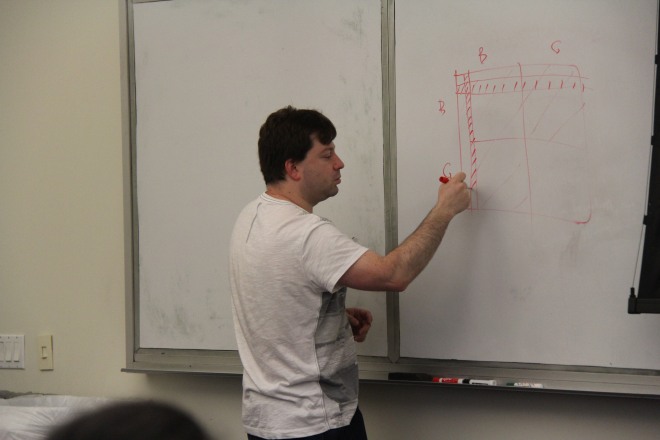
Campers learned about various graph search algorithms, including breadth first search, depth first search, and Dijkstra’s algorithm. They spent some time exploring interactive online demos of the searches, then discussed the pros and cons of the algorithms as a class. The campers learned how these algorithms can be implemented in computer programs using data structures such as stacks, queues, and priority queues.
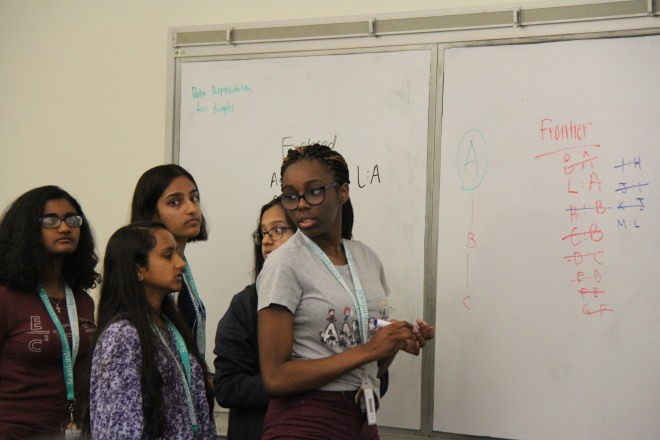
Next, campers got to hear from Stanford Professor of Linguistics and Computer Science Dan Jurafsky about his work in natural language processing (NLP) and computational linguistics. Prof. Jurafsky started with a fun analogy about the origin of national foods, eliciting lots of laughter from the campers.
He then moved on to describing how NLP is used to research issues that are very relevant today. For example, classifiers have been utilized to analyze traffic stop interactions and measure how polite and respectful police officers are to drivers of different races. Campers also learned how NLP and computational linguistics can be used to explain the differences between the language used in negative and positive restaurant reviews.
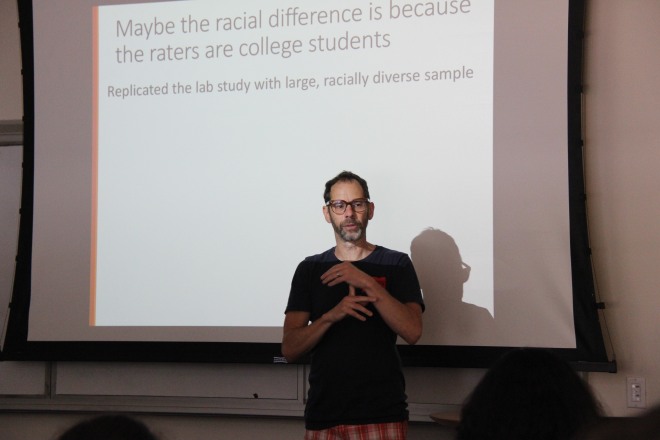
At the end of the talk, campers were full of questions about this research. Luckily, they got to spend their lunch with Prof. Jurafsky to continue learning about NLP.
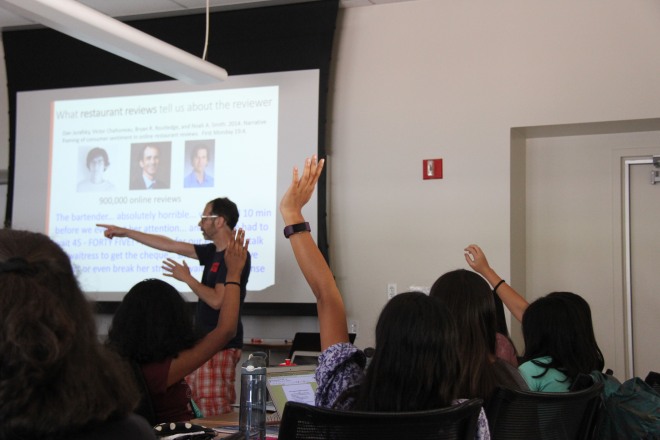
After lunch, the campers spent some time reviewing probability and graph searches by working together on a challenging problem set, with the help of Wells.
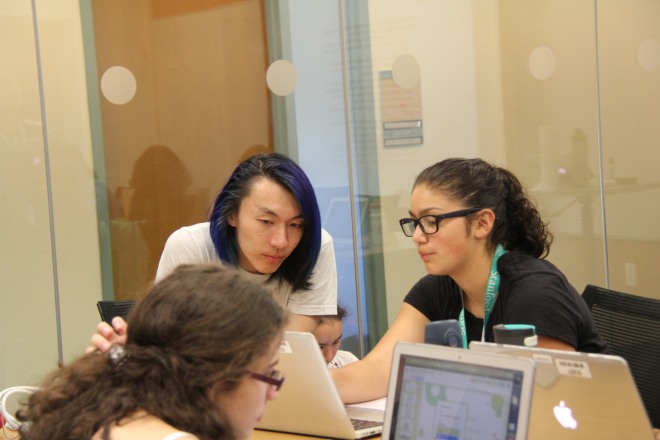
The girls then got to meet the Stanford Jackrabbot, an autonomous robot that uses many cameras and sensors to navigate around. Marynel Vázquez, one of the researchers who has worked on Jackrabbot, demoed the robot while explaining how it works.
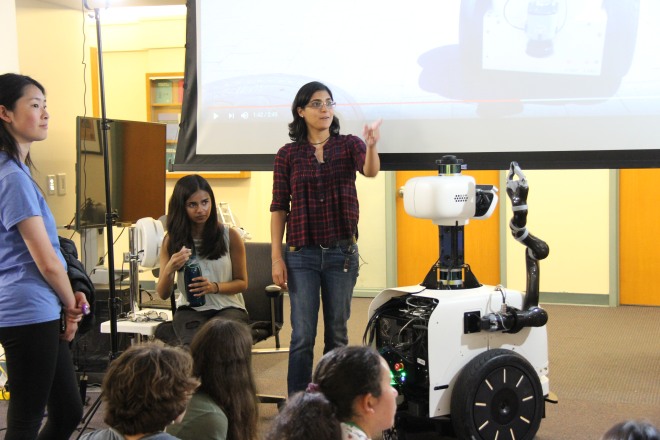
The campers had tons of questions about how Jackrabbot portrays different expressions with its eyes and how researchers are making Jackrabbot safe.
After dinner, the students worked on their presentation skills with Alex Dainis, who is a part of the Oral Communication Program at the Stanford Hume Center.
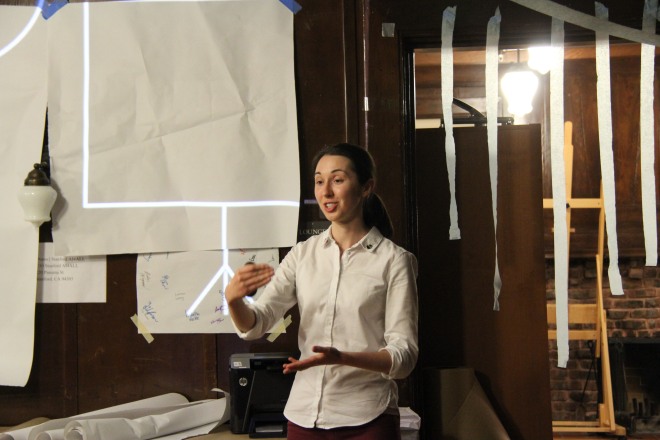
They learned how to craft an engaging introduction and how to use visuals to enhance their presentations. The girls all took part in an elevator pitch activity to practice their delivery skills. They came up with short pitches about AI4ALL, projects they’ve been working on, and more.
Blog post and all photos by Anna Wong.







